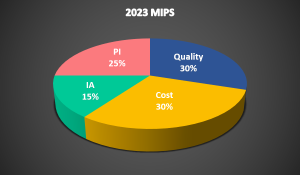Intended audience:
HL7 Interface Developers/Engineers/Analysts and IT
management
HL7 Interface Developers/Engineers/Analysts and IT
management
This is part one of a two-part series, in which
I’ll extol the virtues and considerations of project management in the world of
interface development. These are simply
practical and day-to-day observations I’ve made after 6+ years in the trade.
Part two to come in August 2013 and will be called: Tools of a Project
Manager
I’ll extol the virtues and considerations of project management in the world of
interface development. These are simply
practical and day-to-day observations I’ve made after 6+ years in the trade.
Part two to come in August 2013 and will be called: Tools of a Project
Manager
Whether it is a large project, or just one ADT
thread, the most efficient and successful projects usually involve someone who
takes on the role of Project Manager (aka
PM).
thread, the most efficient and successful projects usually involve someone who
takes on the role of Project Manager (aka
PM).
The players in an interface project will usually
consist of:
consist of:
- an interface developer for
each of the vendor systems - an interface developer for
the interface engine - someone who will be
participating in the Testing on each end (that person is usually a user in the
applicable department, such as a Registration Clerk who will enter ADTs, a Lab
Tech who will enter Lab Orders and/or Results)
A diagram of this scenario would
be:
be:
Someone needs to manage the project, but who is the
right person? I find that the project is
best served if the PM is the interface developer who handles the interface engine, if that person has the
temperament and project management mindset.
Any person on the team can manage the project, but the interface developer for the engine is typically most knowledgeable about all points in the process.
right person? I find that the project is
best served if the PM is the interface developer who handles the interface engine, if that person has the
temperament and project management mindset.
Any person on the team can manage the project, but the interface developer for the engine is typically most knowledgeable about all points in the process.
Sometimes one of the Vendors assigns a dedicated PM to the project, but that
is a rarity.
is a rarity.
Interface development is such a niche that it is
not common to find a PM within the hospital who is familiar with all of the
steps involved in an interface project and who also has the time to dive into the
project.
not common to find a PM within the hospital who is familiar with all of the
steps involved in an interface project and who also has the time to dive into the
project.
Fluid project
management
management
I find that a good description for this type of project
management is fluid project
management as compared to rigid
project management. In these types of projects the team must be very flexible because it’s a small team and most team members have multiple responsibilities within their workplace. Because Patient Care comes first and issues often arise, the projects can be sidelined due to people on the project being called away.
Even scheduled go-live dates can change at the last minute, although that
is not common.
management is fluid project
management as compared to rigid
project management. In these types of projects the team must be very flexible because it’s a small team and most team members have multiple responsibilities within their workplace. Because Patient Care comes first and issues often arise, the projects can be sidelined due to people on the project being called away.
Even scheduled go-live dates can change at the last minute, although that
is not common.
The person in the PM role must be able to:
- Keep track of all of the tasks involved
- Track issues which come up
- Start the project momentum if it is stalled periodically due to conflicting projects or limited resources. Tip:
When this happens, it is very
helpful to refresh everyone on the team by sending an informative email with the
current status of the project including what has been accomplished so far and the next steps in order
to get it back on track.
Managing
a Project:
a Project:
How does this take place?
- Gain an understanding of the project Scope – this usually takes place in phone calls or emails with the
person who is initiating the project. Use a checklist to make sure you cover all
important questions. - Make a project Task List – (a
checklist of all of the basic steps) I
recommend using software to accomplish this task, such as MindJet MindManager,
Excel or Microsoft Project. I use
MindManager because I respond best to the visual “mind mapping” aspect of the
program. You may want to build a template with your generic tasks that you can use at the start of each project. Because Cloverleaf projects are slightly different than HL7Connect projects I use two templates. - Have a kick off conference
call with everyone on the team. - Set a target go-live date (this is
great, and it keeps the project moving. I always try to get a go-live date if it
is at all possible. Sometimes it is not, due to many factors.) - Schedule status calls (if
needed) but beware the “wait till the
status call” syndrome. It is easy for everyone to wait till just before the call
to look at their “to-do” list. So it is
helpful to check-in mid-week with people on the team who you know need to
perform certain tasks before the next call, or the next step in the
project. Tip: The more calls, the more the
project costs the client (the one paying the bills), so try to avoid setting up
recurring Status Calls unless really needed to keep the project moving.
Recurring status calls are best when there is a large team and it gets unwieldy
to try to do all communication by email.
If you have a small team and a small project, emails and individual calls
can be sufficient. - I always try to send out a
Call Summary after a Status Call which summarizes the call, but also contains a
list of Action Items which need to be completed by each team member. The Action Items section of the summary is
invaluable to “get things done.” - A thousand little issues will
come up – keep track of them in your checklist.
I try to update that list as often as possible with little notes to
remind myself of where the issue is, for example:- VPN won’t connect –>
emailed Bob in Network Support –> Bob is setting up a call with the vendor
because he says everything looks good in the
firewall.
- VPN won’t connect –>
- It is beneficial that the PM be the one to gently remind
everyone of the tasks they are responsible for. - Make sure to thank everyone
(say Goodbye) at the end of the project.
This is easy to remember, because based on the length of the project, you
will probably have developed relationships with everyone on the team! Healthcare IT people are usually very
pleasant, professional and fun to work with. (I worked on a year-long project
once, during which various members of our team experienced: a new baby, the loss of a beloved elderly
parent, a heart-attack, a home renovation and a
hurricane.)
An
experienced Project Manager is able to:
experienced Project Manager is able to:
- Help resolve VPN or other
Connectivity issues which can potentially derail an interface project for long
periods of time – While not technically resolving the issue, the PM can push
this to resolution much faster than just letting it resolve without
intervention. - Determine where the best
place for modifications to the HL7 message should take place (at the Vendor
side, or in the Engine). - Identify end users who need
extra explanation because they aren’t usually involved in this type of
project. - During the Testing phase, provide step-by-step
checklists for various members of the team. - Schedule Testing calls and
guide the Testing where necessary. - Share tips and tricks from
previous projects with the Team. - Move the project forward and
to fruition.
There are times when a project is abandoned due to
lack of project management. All members
of the team and the client are always
grateful when the project moves and a successful outcome is achieved, despite
roadblocks and technical issues which may arise. Those roadblocks and technical issues can be
project-killers without someone moving things along.
lack of project management. All members
of the team and the client are always
grateful when the project moves and a successful outcome is achieved, despite
roadblocks and technical issues which may arise. Those roadblocks and technical issues can be
project-killers without someone moving things along.
Healthcare management and teams truly appreciate
not having to worry about how their interface projects are progressing, and
Project Management can make that happen.
not having to worry about how their interface projects are progressing, and
Project Management can make that happen.
Different types of projects you may
encounter:
encounter:
- A hospital or healthcare
facility with an existing interface engine. You are tasked with adding a new
interface or modifying an existing interface. - A hospital which is
converting from one interface engine to another. - A hospital which is
converting from one main HIS system to another, which requires updating all of
the existing interfaces to the new HL7 message format for the new
HIS. - A hospital or a healthcare
facility which has never had an interface engine, and is now getting one… because they are very wise.
All of these projects greatly benefit from
effective Project Management. They can
all be done without it, but… wow, the difference is profound.
effective Project Management. They can
all be done without it, but… wow, the difference is profound.
Connie Zimmermann’s primary ‘hats’ are as an HL7
interface developer for HL7Connect and Cloverleaf and a trainer for
HL7Connect. She has been a happy member
of the Dynamic Health IT team since 2004.
interface developer for HL7Connect and Cloverleaf and a trainer for
HL7Connect. She has been a happy member
of the Dynamic Health IT team since 2004.
Dynamic Health IT, Inc.
504-309-9103
504-309-9103
or
visit our Contact Us
page.
Dynamic Health IT offers Interface Development and Consulting for
many popular interface engines, as well as Bolt-On tools for HITECH/ONC 2011 Edition and 2014 Edition Certification for hospitals and vendors. DHIT’s ConnectEHR software was the first 2014 Edition product certified through ICSA Labs.





Excellent post! I must thank you for this informative read.